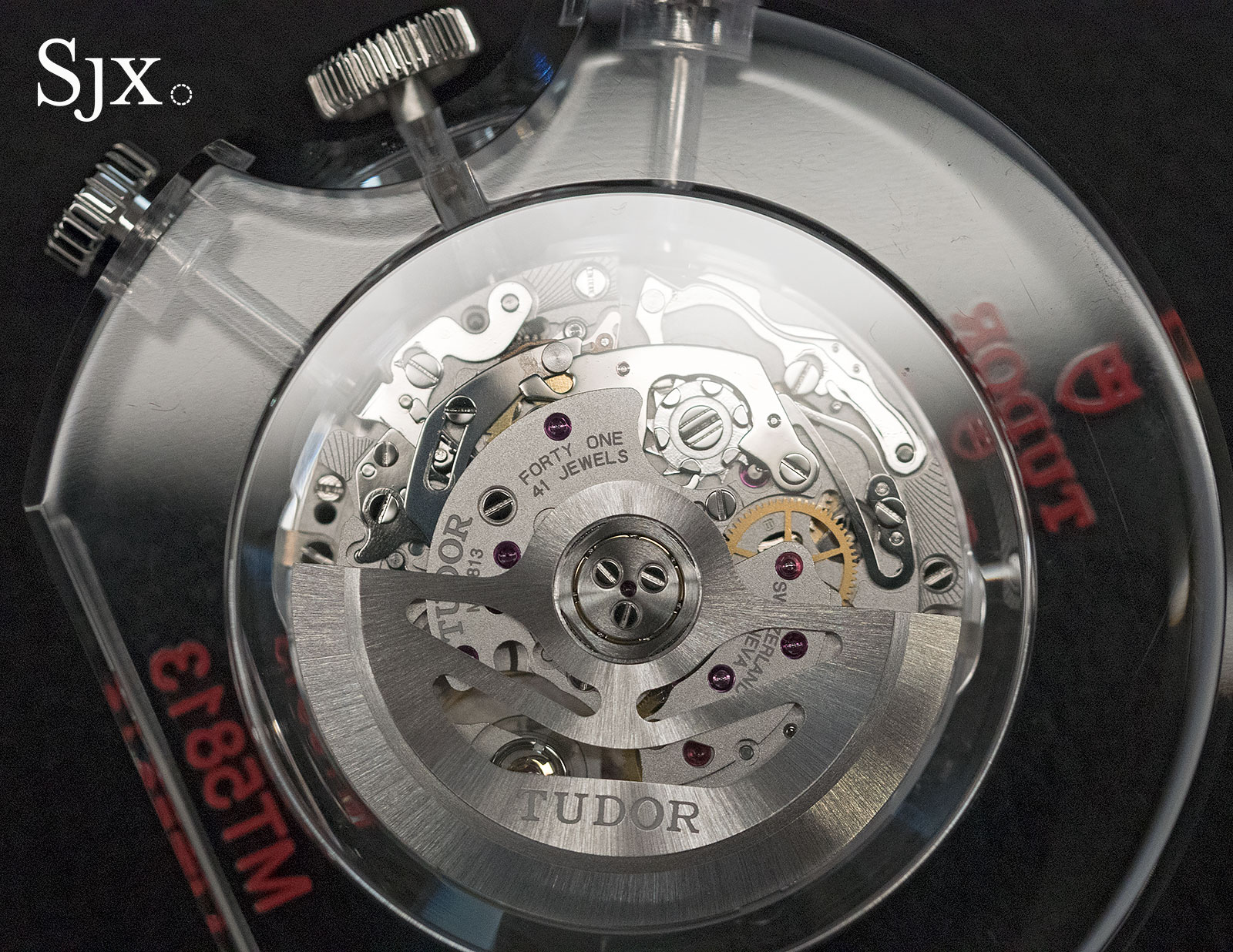All You Need to Know About the Tudor MT5813 Chronograph Movement
Developed by Breitling, fully spec'ed, and impressive value for money.
Making its debut inside the new Tudor Black Bay Chrono, the MT5813 is a lot of movement for comparatively little money. It’s made by Breitling for Tudor, and is likely the highest spec Swiss made chronograph movement for the money on the market today, being inside a watch that costs less than US$5000.
The MT5813 has a column wheel as the start-stop switch for the chronograph, as well as a vertical clutch that transmits power from the base movement to the chronograph mechanism.
Both are features standard in mid- to high-end modern chronograph movements like the calibre 4130 in the Rolex Daytona (which according to industry lore was developed by many of the same engineers who subsequently created the Breitling calibre).
It also has a 70-hour power reserve, meaning it’ll run for three days on a full wind. And the balance wheel is fitted with a silicon hairspring, a technological convenience that’s resistant to magnetism, temperature variations, as well as not needing any adjustment.
The movement has a solid, even sophisticated, construction, but is evidently produced in a mechanical manner. The look is functional and straightforward. Steel chronograph levers are stamped and tumble-finished, while the gilded gears are sandblasted. And the spiral graining on the edge of the base plate is obviously engraved by machine.
The Breitling connection
Despite the “MT” prefix, which is short for “Manufacture Tudor”, the MT5813 is manufactured by Breitling, a fact Tudor candidly revealed, to its credit.
It’s essentially a variant of the Breitling 01 (or B01) movement, the in-house movement Breitling introduced in 2009. That’s the same calibre used as the base for last year’s awesomely high tech Chronoworks.
Having embarked on a collaboration with Breitling several years ago, the MT5831 chronograph movement is produced by Breitling for Tudor. And in return, Tudor will supply its own automatic MT56 movement to Breitling; that’s the same calibre found in the second generation Pelagos and Black Bay.
The reciprocal arrangement makes sense, since each brand has likely built up production capacity that’s more than enough to satisfy its own demand. Breitling, for instance, built a four-storey building in La Chaux-de-Fonds for production of the Breitling 01 movement.
What sets it apart
Several features distinguish the Tudor version from from a Breitling movement. The first two are cosmetic and the most obvious: the sandblasted finish on the bridges and base plate, as well as the rotor design. Both are also found on Tudor’s own in-house calibres.
More significant is the Tudor regulator, made up of a free sprung balance wheel with four adjustable masses, which is the same balance is found on Tudor’s own movements.
And on the front, the elapsed minute counter is for 45 minutes, instead of the more conventional 30-minute counter.
The value
While the historical congruence of the Black Bay Chrono is controversial (since the diver’s watch dial doesn’t tally with the auto racing tachymetric bezel), its value is more certain.
Priced at SFr4800 (that’s about US$4840) on a bracelet, the Black Bay Chrono is almost half the price of a similar Breitling Chronomat with the Breitling 01 movement.
That’s about as affordable as it gets for a Swiss made chronograph with a comparable movement. In fact, it’s almost comparable to Seiko’s automatic chronographs, which are probably world champions in the value for money stakes.
Update March 27, 2017: Additional photos included.
Back to top.